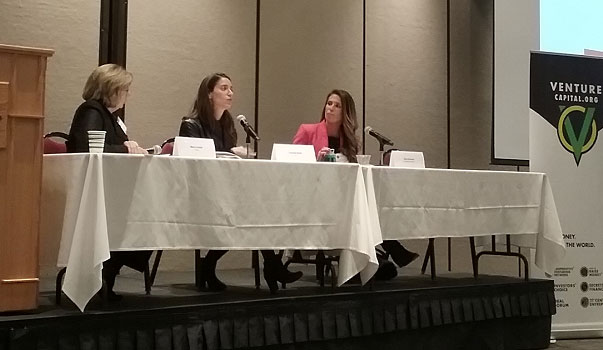Congratulations WeROC for being published in Utah Business.
Published by:
Lisa Christensen, Utah Business
Oct 26, 2017
Sandy—When it comes to entrepreneurship, women are still in the distinct minority—they get less than 2 percent of venture capital funds—and yet female-owned businesses represent the fastest-growing segment of the workforce.
There’s a discrepancy there that needs to be addressed, said presenters and panelists at the WeROC Conference at Salt Lake Community College Thursday.
In a live analysis of language used by a group of investors to male and female entrepreneurs, the investors were more likely to ask questions to men about the best-case scenarios of their businesses but about the likelihood of failure to women, Beresini said. The twist? Forty percent of those investors were women, and the pattern still held.
“This is a mindset we must change, and it is a mindset,” said Debra Beresini, CEO of invencor, inc. “Even as a woman, we have bias in our own gender, and all of us need to be aware of that if we want to support women.”
There are many reasons why women find more barriers to getting funding as an entrepreneur than her male counterpart. Sometimes, there’s a perception that investors can’t shake no matter how good the pitch is, said Nancy Phillipart, general partner with The Belle Michigan Fund, which deals exclusively in early investments in female-founded or -led startups.
One business they enthusiastically backed had software that helped make industrial vehicle recalls more efficient and streamlined, Phillipart said, which before was a massive gap in the industry in dire need of filling. The proprietor, a California woman in her 60s, initially had difficulty finding investors who understood the need. But in Michigan, where investors tend to be much more familiar with the automotive industry as a whole, she found some investors who understood and appreciated her message but could not get past her image—they found her too much of a “hippie” for their tastes.
“I think if there had been a man pitching this they definitely would have invested, because they understood this problem and many of them lived it,” she said.
That entrepreneur eventually found other investors who understood her vision and ended up exceeding her goal for her initial round of funding by about half a million dollars, Phillipart said. By round two, investors were clamoring for a piece of the pie.
Read the full article here.

